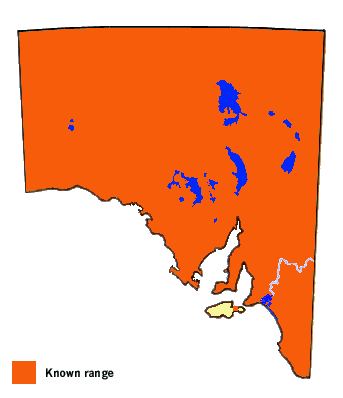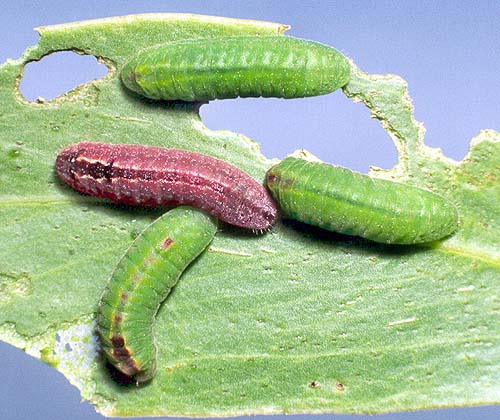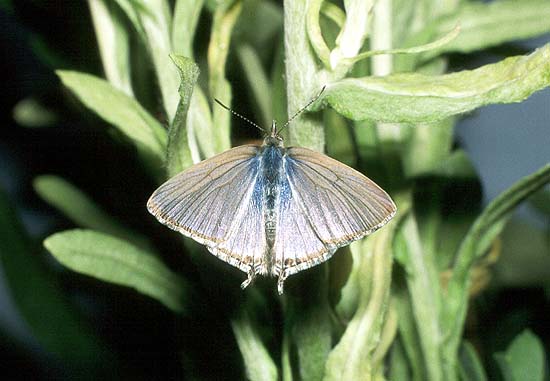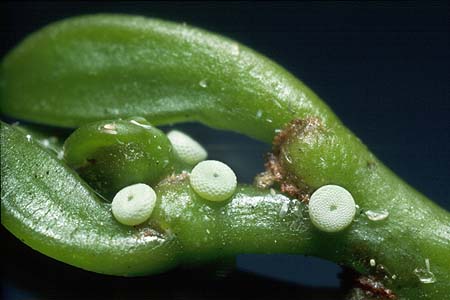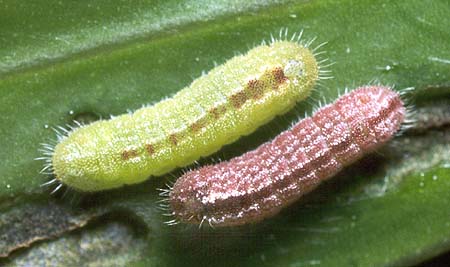Wattle Blue
Theclinesthes miskini miskini (T.P. Lucas)
Interesting Aspects
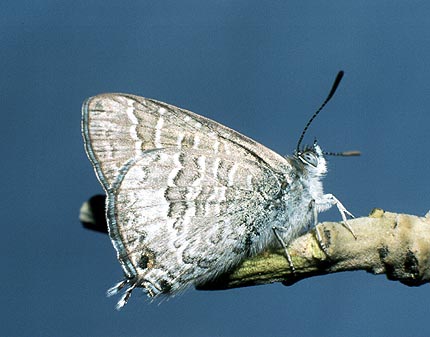
The males are fast flying and are nearly always found congregating on dune and hill tops. The females are rare and are found near the hostplant. Butterflies flying in winter are much darker on the underside due to the increased melanin content acquired during the longer pupal period.

